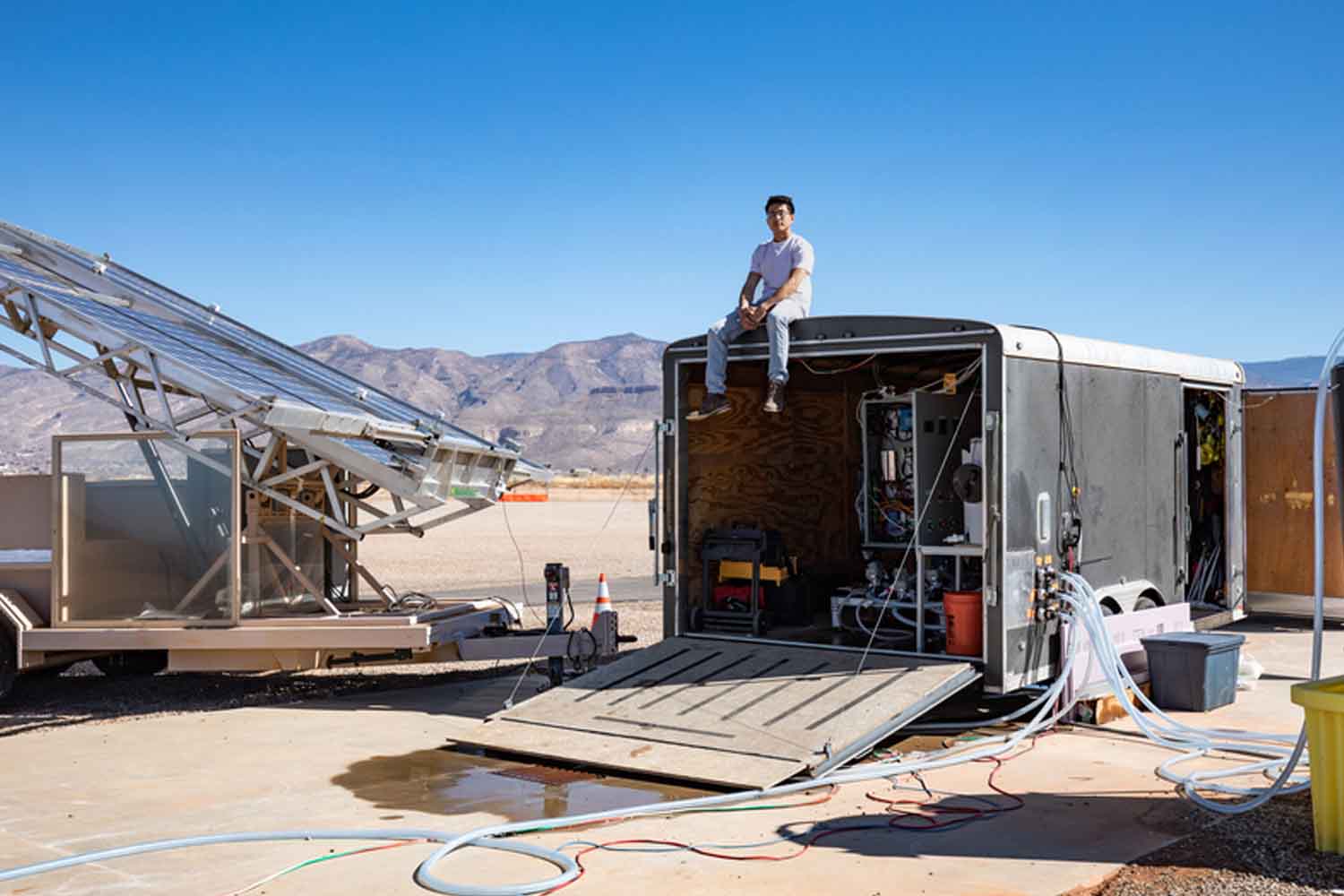Engineers at MIT have created a solar-powered desalination plant, with no batteries in sight to keep it functional and capable of supplying 1,320 gallons of fresh water in one day. This is an efficient design in solar tracking that could do such a task in the most far-flung areas from civilization, taking in 94% sunlight for useable energy in order to desalinate the brackish groundwater through a sustainable process.

©MIT
Engineers at the Massachusetts Institute of Technology have introduced the newest desalination system fueled by solar energy that requires no battery storage but completely relies on the rhythm of the sun. This groundbreaking, solar-powered device is capable of producing as much as 1,320 gallons of drinking water daily. These sorts of systems offer a viable solution for those arid or remote areas without direct access to fresh water.
Solar tracking electrodialysis technology
That is, it uses solar-tracking electrodialysis technology that self-adjusts according to changes in sunlight. Such an approach can therefore also eliminate the need for expensive energy storage solutions when there is no sunshine and can also provide a supply of relatively inexpensive drinking water to communities. This way, the system does not need batteries, which makes it less expensive and more environmentally friendly to install in remote communities. As the researchers explain:
Conventional desalination technologies operate at a constant power and utilize battery storage to stabilize an erratic energy source like the sun, said Amos Winter, the Germeshausen Professor of Mechanical Engineering and director of the K. Lisa Yang Global Engineering and Research (GEAR) Center at MIT. By synchronizing power consumption with sunlight, our design produces water by directly converting sunlight, an extremely efficient process. Producing drinking water with unobtrusive renewable-source collectors without storing BAT batteries has been considered the holy grail-and we’ve made it.”
An eco-friendly solution for brackish groundwater
The MIT device is particularly good at removing salt from brackish groundwater, which is much more plentiful than freshwater sources. During field tests in New Mexico, the prototype proved capable of converting as much as 94% of solar energy into electrical energy, long-term production staying consistent even on cloudy days.
With its smart design, this system automatically adapts desalination with respect to sunlight, with no batteries. This adaptability ensures maximum efficiency in the harnessing of solar energy at all times and reduces costs for inland communities:
Most people don’t live within a reasonable distance from the coast, so seawater desalination is impractical for them,” said Jonathan Bessette, a Ph.D. student in mechanical engineering at MIT. “Instead, they often rely on shallow groundwater, especially in remote or low-income communities. The problem is, that groundwater is becoming increasingly saline due to climate change. This technology might make it possible for clean water to be sustainably and affordably delivered to the world’s most remote regions.
The work ahead for the MIT engineers is to make the system more reliable and increase the amount it can produce to cater to an entire community, and commercialization of this technology is expected to begin in a few months.
“We are now concentrating on tests, maximizing the reliability, and creating a product line able to supply desalinated water with renewable sources to various markets around the world,” Pratt said.
Source: MIT
